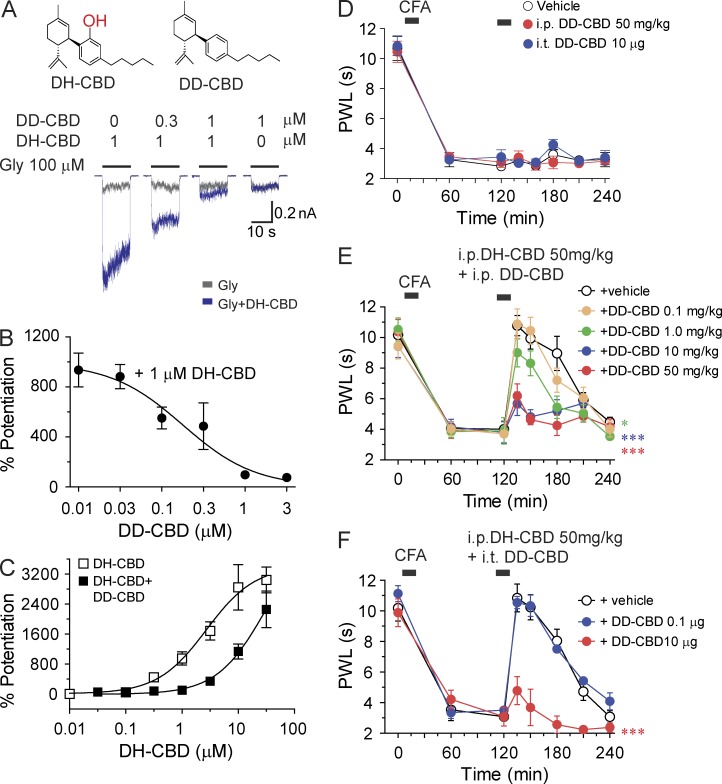Figure 5.
Antagonism of DD-CBD to DH-CBD–induced potentiation of IGly and analgesia in inflammatory pain. (A) Structures of DH-CBD and DD-CBD. Trace records of IGly in HEK 293 cells expressing the α3 GlyRs without and with co-application of DD-CBD and DH-CBD. (B) DD-CBD inhibition of DH-CBD–induced potentiation of IGly in HEK 293 cells expressing the α3 GlyRs (n = 6). (C) The concentration-response curves of DH-CBD–induced potentiation of IGly without and with 1 µM DD-CBD (n = 5–7). (D) The effect of i.t. and i.p. application of DD-CBD on PWL to thermal stimulation after CFA paw injection in mice (n = 7–10). (E) Dose-dependent inhibition of i.p. DH-CBD–induced analgesic effect by i.p. application of DD-CBD in post-CFA mice (n = 7–10). (F) Dose-dependent inhibition of i.p. DH-CBD–induced analgesic effect by i.t. application of DD-CBD in post-CFA mice (n = 8–10). *, P < 0.05; ***, P < 0.001, as compared with vehicle injection. Data are representative of two independent experiments and expressed as mean ± SEM.

